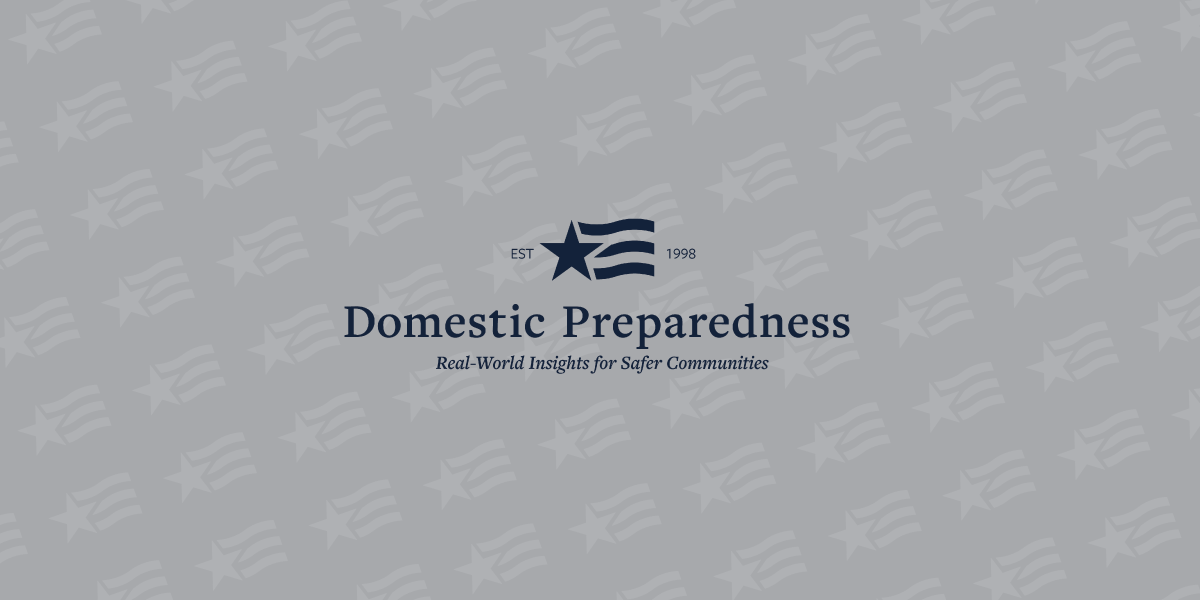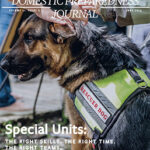- Articles, CBRNE, Critical Infrastructure, Emergency Management, Emergency Medical Services, Hospitals, Law Enforcement, Public Health, Science & Technology
- Greg Burel
Planning the response to a public health emergency can be a daunting endeavor. Many factors in multiple complex systems contribute to the potential for success in executing these plans at every level of the response. Preparedness planners have to consider these many factors to ensure that their plans can work despite potential failure points.
Potential failure points exist all along the route of identifying, for example, a medication that can save life or reduce illness to the point that someone who needs it can take a pill. At the Centers for Disease Control and Prevention’s Strategic National Stockpile (SNS), many of these failure points are addressed in the work that SNS and its federal, state, and local partners do to prepare for an emergency. SNS uses predictive technology and software tools to improve its capabilities around three main failure points: having the right medications available; distributing those medications across the nation to the specific communities in need; and, finally, dispensing those medications to individuals.
Health Security Within Complex Systems
CDC’s SNS is a repository of large quantities of medicines, vaccines, and other critical medical supplies that can be rapidly mobilized to intervene in a life-threatening situation. The SNS is one part of a web of resources that must be successfully employed to respond to and recover from national public health emergencies. CDC has worked with state and local public health emergency planners for years to create plans to respond to various threat scenarios. If those plans fail to work when a threat becomes reality, they represent no gain in preparedness. To make sure the plans work, they must be tested and refined.
Success is not achieved in a vacuum. There are many actors in the complex system of responding to public health threats and emergencies. A threat to public health may be discovered when multiple people get sick and astute clinicians recognize their illness as an unusual case or cluster of cases. The first response community may identify a threat as it assists those who are suddenly and visibly affected by things like accidental release of harmful material or who are physically injured in an accidental or intentional disaster. Law enforcement personnel may see a threat or a need to assure persons who are affected by or responding to a disaster are protected.
When a threat that may have implications for national health security is identified, various computer models can be applied to identify potential numbers of people who need help. These numbers are based on scenarios used to drive computer projections of required interventions. Understanding these factors, SNS can begin to apply other models to decide what the cost will be to hold various material to affect positive interventions. This leads to many of the tradeoff decisions that must be made in order to protect the most people for the highest likely threat scenarios while providing a good return on investment and value to the public.
Resource Positioning & Distribution
As material is identified and incorporated into the SNS, SNS personnel must ensure that the material can actually be used in a clinically relevant time, place, and method to return the desired positive outcomes. The first step in this process is to position the material throughout the storage network to enable rapid delivery to any location in the United States. Once material is placed in storage, SNS projects timelines to move the material to the locations where it might be needed and regularly updates its projections for delivery.
It is commonly understood in the emergency management community that preparedness plans must be exercised regularly to identify and correct gaps and ensure that actors in a response system know and can accomplish their roles effectively. A well-planned exercise that involves the public, who may someday be at risk, can inform and educate all levels of the nation in what to expect and how to act in the event of an emergency. The fact is that, if plan improvements are made without testing them to ensure they work, gaps will continue to exist. Although exercises on a large scale need to be conducted routinely to test and evaluate public health emergency response plans, doing so can be costly. In addition, repeating these drills and exercises to test variables and proposed alternatives is prohibitive to even the best-funded jurisdictions. Fortunately, there are alternatives that can more efficiently identify gaps and help refine plans.
Complex systems, such as those SNS relies on to quickly and efficiently deliver a countermeasure to an area of need during a response, are inherently difficult to test and evaluate. The high number of inter-relationships in multiple systems during an event can be quickly overwhelming. The cost to actively conduct tests with large numbers of participants and other resources can be daunting. This is especially true considering the limited funds that are available to pilot and evaluate proposed new response strategies to possible events or scenarios. The answers to many of these questions lie in application of technology to public health interventions. SNS has invested in tools that specifically help its state and local partners better prepare to respond in their jurisdictions, while easing possible resource burdens that they face. Two prominent tools SNS provides free of charge to its state and local partners are SNS TourSolverTM and the RealOpt Suite© of Preparedness and Response Optimization Tools.
Technology for Medical Supply Dispensing
SNS TourSolverTM – a system with over 1,200 users – is a web-based software optimization program that assists state and regional planners in routing their vehicle fleets to optimize the speed with which medical countermeasures (MCMs) are distributed to points of dispensing (PODs) and other medical facilities. This product, developed and maintained by c2Logix-Route Optimization Solutions, is offered at no cost to state, local, tribal, and territorial partners to help maximize countermeasure distribution. SNS TourSolverTM gives emergency preparedness personnel abilities to quickly generate optimized distribution routes for delivery of PODs and simulate multiple scenarios that might affect those routes.
A user can easily adjust the number and size of trucks that are available to move products, the quantity of product that should be delivered to each POD, and the ways in which factors such as time windows and multiple deliveries might influence the dispensing of medicines. This takes planning far ahead of the days when routes were planned by putting pushpins in maps or using software that could only route individual vehicles. The software allows users to save scenarios for later access and revision, and model the effect of traffic and other route disruptions on their existing plans.
To address the challenges faced at the local level once product is delivered to each POD, the RealOpt Suite of tools is available. Since 2006, CDC’s National Center for Environmental Health (NCEH) and SNS have funded the development of a suite of tools by the Center for Operations Research in Medicine and HealthCare, School of Industrial and Systems Engineering, Georgia Institute of Technology. Taken together, this is called the RealOpt Suite© of Preparedness and Response Optimization Tools. The current RealOpt modules have nearly 10,000 registered users in total.
The RealOpt Suite is comprised of several modeling and optimization software tools designed for planning and simulating flow of persons through PODs, apportioning and dispensing medicines, and even planning for response to radiological events. Using RealOpt, a jurisdiction may design a POD and then see how quickly they can achieve movement of individuals through that POD. Applying this tool will allow a planner to test various assumptions about how many people can be served and how quickly through a given POD. This can lead to a better understanding of how many PODs are required and how many individuals are needed to staff each of those PODs in order to provide medicine to their population in a defined timeline. RealOpt-POD can help optimize the location of PODs so that they reach the optimal number of people. Using computer models such as this is a much cheaper way to determine if a plan works than iterative testing of various scenarios through real-time, resource-intensive exercises and drills.
As the state of public health preparedness continues to advance, preparedness planners must continue to consider how to leverage today’s technology and look ahead to emerging capabilities. Application of technological innovation, particularly computational modeling and simulation, will allow the public health sector to better identify resource limitations and overcome those to improve preparedness efforts.
To learn more about SNS, visit https://aspr.hhs.gov/Pages/Home.aspx.

Greg Burel
Greg Burel is director of the Strategic National Stockpile, managed by the Department of Health and Human Services’ Assistant Secretary for Preparedness and Response. As head of the nation’s largest stockpile of medicines and supplies available for emergency use, he is a leading expert on medical supply chain management in the United States. With more than 35 years of civil service, he has risen through the ranks of the federal government, beginning his career at the Internal Revenue Service and serving in leadership roles in both the General Services Administration and the Federal Emergency Management Agency. In 2006, he assumed the helm of Strategic National Stockpile operations. He was awarded the Samuel J. Heyman Service to America Medal for Management Excellence and selected as a National Academy of Public Administration fellow in 2016.
- Greg Burelhttps://domprep.com/author/greg-burel
- Greg Burelhttps://domprep.com/author/greg-burel
- Greg Burelhttps://domprep.com/author/greg-burel
- Greg Burelhttps://domprep.com/author/greg-burel






